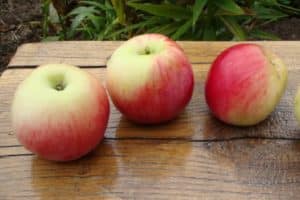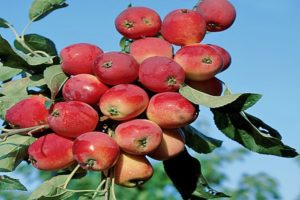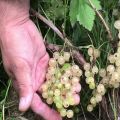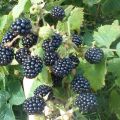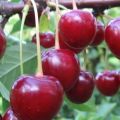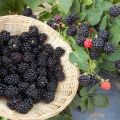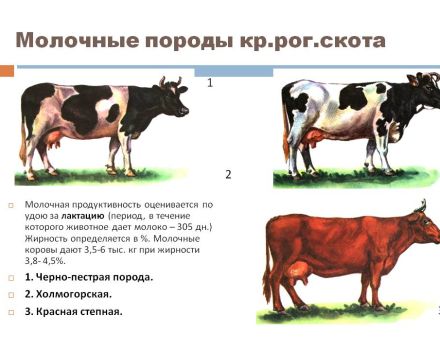Description and characteristics of the fruiting variety of Welsey apple trees, cultivation and care
The Welsey apple tree is native to America. In Russia, the plant became widespread at the end of the 19th century. The apple tree is resistant to diseases and cold weather conditions, therefore it is widely used for breeding purposes. The fruits are well kept fresh for a long time and are used for processing. On the basis of the Welsey variety, more than 40 varieties of apple trees were bred, which received good reviews and recommendations.
Content
- 1 Description and general characteristics of the Welsey apple variety
- 2 Advantages and disadvantages of the variety
- 3 Landing features
- 4 Care rules
- 5 Diseases and pests: main types and solutions to the problem
- 6 Variety subspecies
- 7 Features of cultivation in different regions
- 8 Harvesting
- 9 Harvest storage
Description and general characteristics of the Welsey apple variety
Due to its winter hardiness, the variety is suitable for widespread cultivation. With a favorable climate, Wales produces a good, stable harvest.
Tree height
The trees are medium-sized and short. On a dwarf rootstock, the growth is no more than 4 meters. The variety grown on a vigorous rootstock reaches a height of 5.5 meters.
Crown width
Young trees under 6 years old have a wide pyramidal crown. The mature plant gradually takes on a rounded, oval shape. The main branches at an acute angle depart from the trunk, which is a common cause of branches breaking off under the weight of the crop.
Yield
Depending on the region of growth, the crop ripens:
- in September, early October;
- at the beginning of winter.
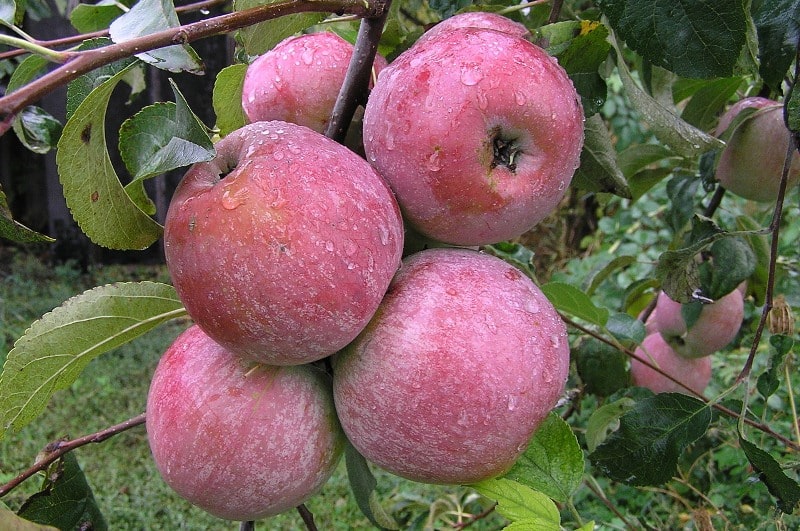
Differs in high productivity. One tree produces up to 200 kg of high quality fruit. Yield indicators gradually increase with the age of the plant. When a large number of fruits are set and ripened, the apples become small.
In favorable climatic zones it gives a stable, good harvest. Bears fruit in a year.
A feature of the variety is the poor attachment of apples to the branches. It is necessary to monitor the technical maturity of the fruit and harvest them immediately after ripening. Otherwise, the crop will fall, which will negatively affect further storage.
Self-fertility
The plant belongs to self-fertile varieties. It is recommended to plant apple trees nearby:
- Borovinka;
- Mekintosh;
- Delicious;
- Antonovka.
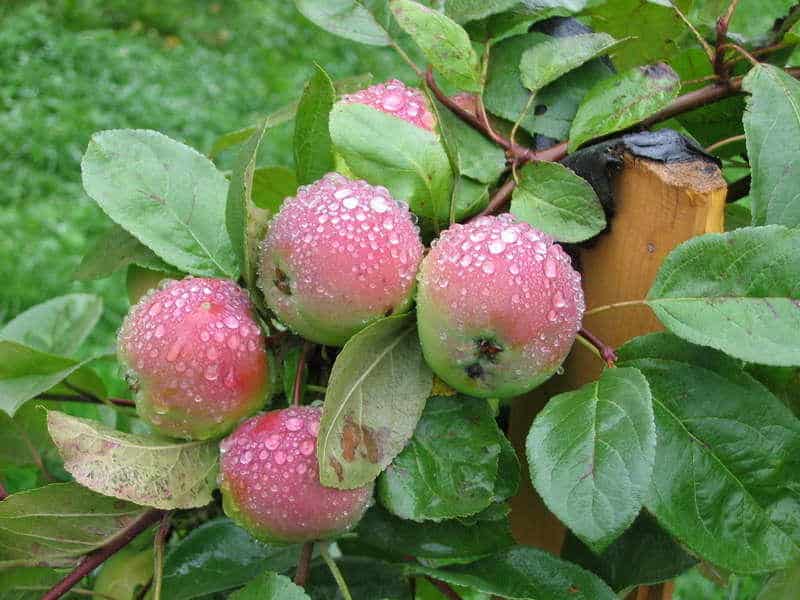
Tasting assessment
Apples have a sweet and sour taste and delicate aroma. They have good taste characteristics. On a five-point scale, the fetuses were assigned 3.9 points.
Winter hardiness
The most common variety in:
- Belarus;
- the European part of the Russian Federation;
- The Baltics.
It has an average winter hardiness. It withstands well -20 ... -25 ° С. Lower temperatures may damage the shoots.Therefore, in regions with severe winters, the plant requires shelter. To do this, the trunk is tied with burlap or reeds.
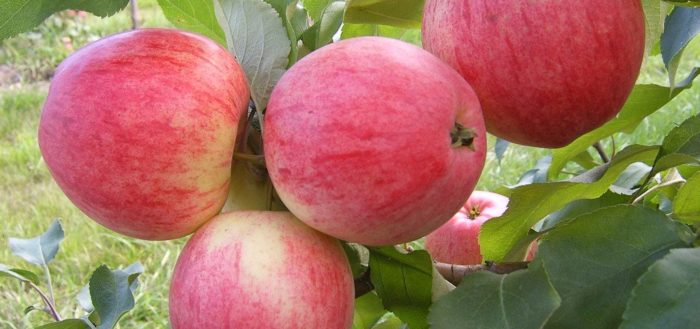
Disease resistance
May be amazed:
- fruit rot;
- cytosporosis;
- powdery mildew.
It is resistant to the main disease of apple trees - scab.
Advantages and disadvantages of the variety
Positive qualities include:
- high productivity;
- scab resistance;
- high taste of the crop;
- early maturity;
- good transportability of fruits;
- the crop retains its presentation for a long time; subject to the temperature regime, it is stored until February.

Minuses:
- with a plentiful harvest, apples become smaller;
- fruits fall off during ripening;
- weather conditions affect taste.
Insufficient resistance to severe frost for growing in northern latitudes forces gardeners to cover the plant for the winter.
Landing features
Planting and caring for Welsey is practically the same as other apple trees. But before planting seedlings, you should carefully study the recommendations so that the plant quickly adapts and takes root in a new place.
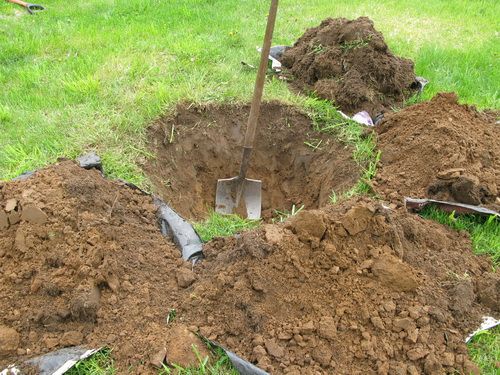
Timing
Saplings take root equally well both in autumn and spring. The main condition is compliance with all recommendations when landing.
A place
When choosing a site for planting seedlings, follow these recommendations:
- The place is chosen illuminated and sublime. During spring flooding, water should not accumulate around the plant, otherwise the root system will get wet, which will lead to the death of the tree.
- The variety does not like constantly wet soil.
- Groundwater should be over 4 meters deep.
- Cannot be planted in areas with strong cold winds.
- The plant does not like constant sun exposure.
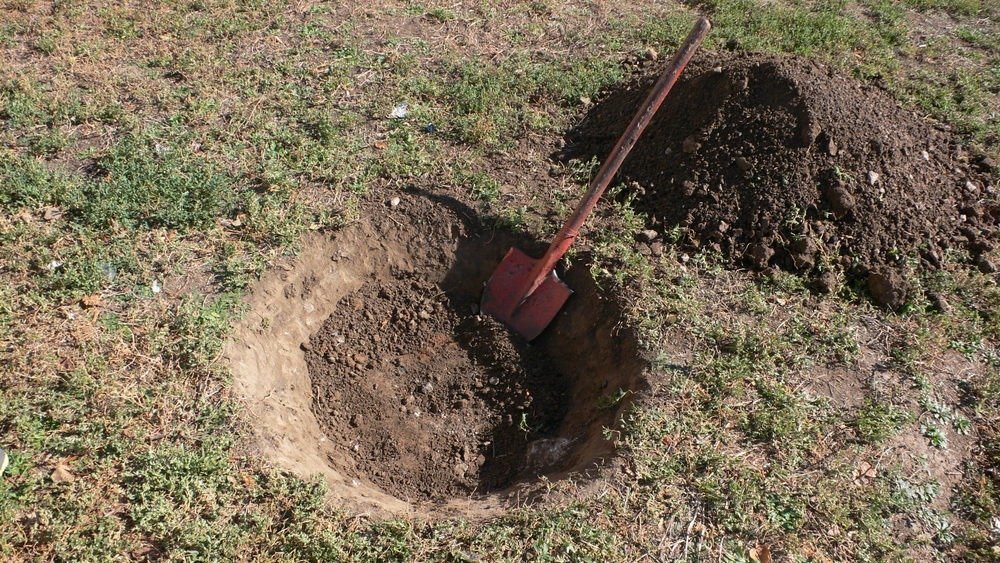
With a high level of groundwater, it is recommended to purchase seedlings on a low-growing rootstock. In such plants, the roots are shallow, which allows the tree to take root and develop well on unfavorable soils.
Priming
The apple tree is planted in pre-prepared and fertilized holes. For spring planting, it is recommended to prepare pits in the fall. The best soils:
- loamy-sandy;
- loam.
The soil needs to be loose, with good water permeability.
Landing scheme
A tree hole is dug about 60 centimeters wide and a meter deep. It is recommended to mix the turf layer with superphosphate and ash. When planting, a peg is placed in the pit, to which the seedling is attached using a soft thread.
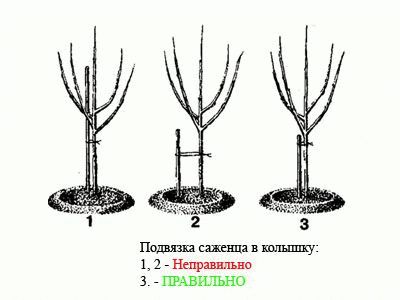
Care rules
The main conditions for caring for a plant in the first year are loosening, watering, fertilizing. Throughout the life of a tree, for abundant fruiting, it is necessary to perform mandatory measures.
Watering
In the first year, watering is carried out every week. It is recommended to water from above so that the branches are washed out. Then the earth is loosened. The procedure is carried out carefully so as not to damage the root system. A mature tree is watered only during prolonged drought. In the summer period with periodic rains, the plant does not need additional soil moisture.
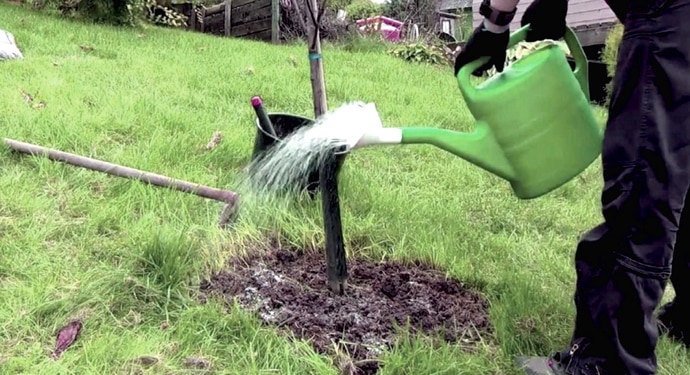
Mulching
The variety does not get along well with weeds. Therefore, for proper development and good fruiting, they constantly weed the ground around the plant. Mulching will help simplify this process. Which is used as:
- dry grass;
- straw;
- pebbles;
- bark;
- compost;
- gravel;
- sand;
- nonwovens.
In the summer, she:
- slows down the growth of weeds;
- does not allow moisture to evaporate, which makes the tree easier to endure extreme heat;
- allows the top layer of the soil to remain loose;
- prevents the soil from overheating, while maintaining the optimal temperature for the development and growth of the apple tree.
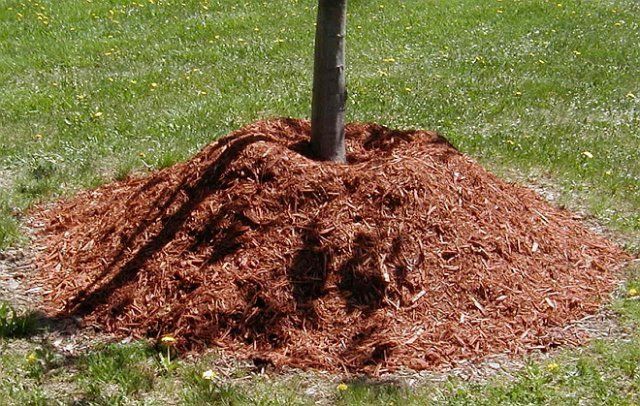
Mulching in the autumn allows you to protect the soil from washing out, weathering and freezing.
Pruning
Regular pruning can increase crown light and strengthen the trunk, which helps withstand bountiful harvests. Shoots are partially cut off during crown formation and completely when thinning.
To awaken strong buds, rejuvenating pruning is necessary, which is carried out in the spring.
In the summer, new branches will grow on the plant, intended for fruiting. When completely pruned, hemp should not be left. Branches dropped to the ground under the weight of the fruit are recommended to be cut.A tree that is pruned regularly produces abundant crops and is protected from disease and pests.
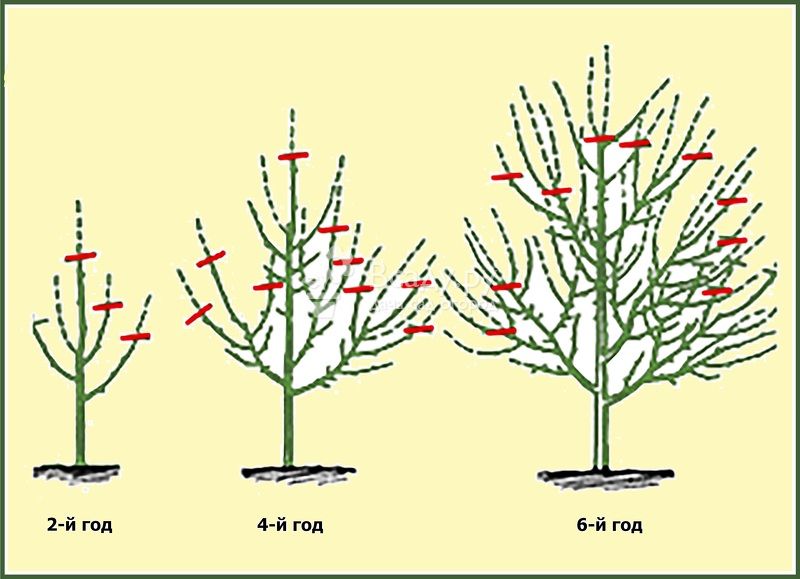
Top dressing
In order for the tree to grow and develop well, top dressing is regularly applied. For this purpose, manure, previously diluted with water (1:10), is ideal. Also used chicken manure, diluted 1:15, and wood ash.
Wintering
It is recommended to protect the variety from frost for the winter period. Cover the lower branches and trunk with materials from rodents. Suitable for these purposes:
- fir branches;
- cane;
- pine branches;
- roofing paper.
The branches are formed in bunches and tied from top to bottom around the trunk. To protect the root system from freezing, a thick layer of fallen leaves is spread around the tree.
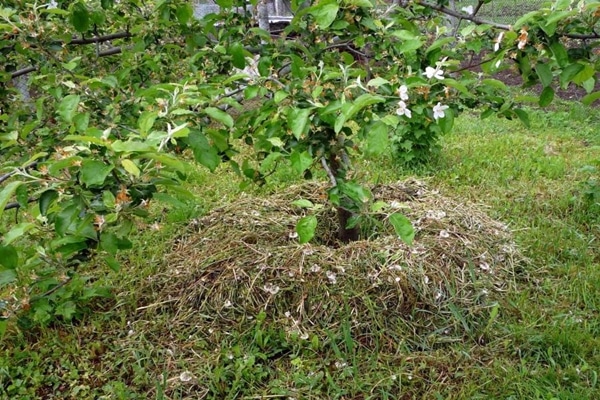
Diseases and pests: main types and solutions to the problem
The main pests:
- apple moth;
- hawthorn.
To protect against insects, all the leaves around the trunk are removed in the fall, and the earth is regularly loosened and weeded. Insecticides are also used. When affected by cytosporosis or powdery mildew, the affected branches are cut and burned. The tree is treated with special preparations. The affected areas of the trunk are cleaned with a knife, treated with iron sulfate and covered with oil paint.
For prevention, they are treated with the drug "Hom":
- before kidney swelling;
- before flowering;
- after flowering.
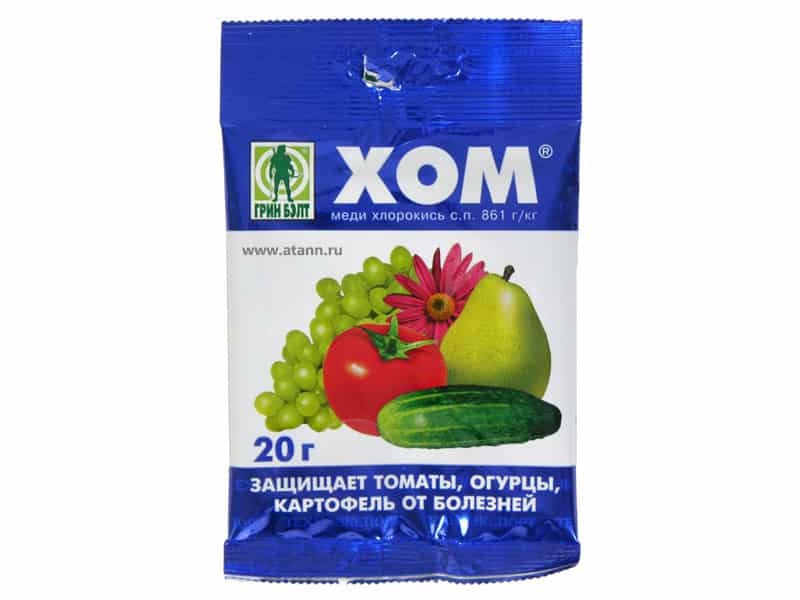
When plants are damaged with powdery mildew, they are treated with:
- copper chloride;
- soda ash mixed with potassium permanganate and soap;
- colloidal sulfur;
- drug "Topaz".
Bordeaux liquid - high-quality prevention of powdery mildew.
Variety subspecies
Welsey is the mother variety for apple trees:
- Bezhin meadow;
- Prima;
- Aelita.
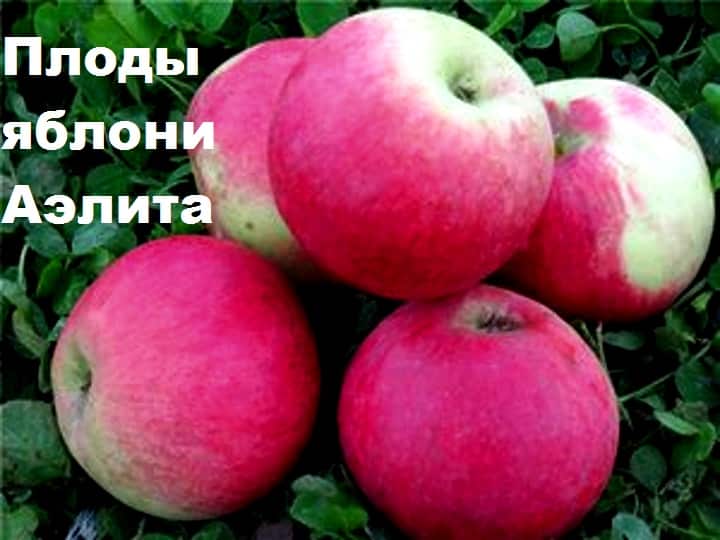
There are subspecies of the variety that are grown in columnar and creeping. For seedlings, semi-dwarf and dwarf rootstocks are used.
Features of cultivation in different regions
There is no particular difference between cultivation of the variety in different regions. The only thing experts pay attention to is the shelter of young trees in areas with severe winters. This procedure helps to avoid damaging the shoots. It is also recommended to pay attention to the composition of the soil. For a bountiful harvest, the necessary dressing is regularly made.
Harvesting
The fruits ripen together. If you are late in picking apples, then gardeners will suffer significant harvest losses. Since fruits that have reached technical maturity quickly fall off, which significantly impairs their appearance, storage and transportability.
The first harvest is carried out in the first decade of September, the second - in the first days of October. In regions with cold summers, the dates are postponed by several weeks.
Harvest storage
For storage, plastic boxes or cardboard boxes are used. The fruits are strong, without damage. Each layer of apples is shifted with dry sawdust or paper. Store in a basement with a temperature of 0 ° ... + 1 ° C.
